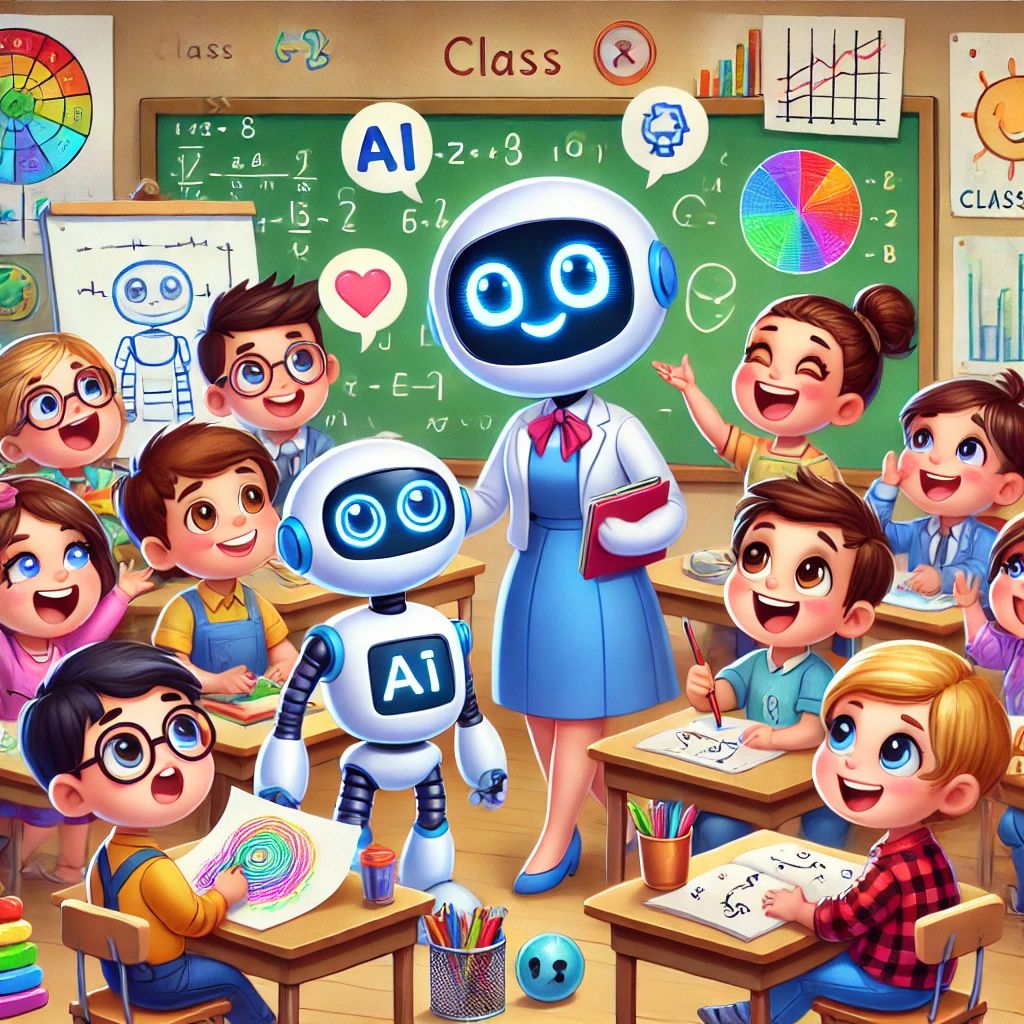Top Artificial Intelligence Projects for Children from Class 1 to Class 8
Artificial Intelligence (AI) isn't just for adults or tech enthusiasts anymore; it's making its way into classrooms to help children learn and explore. These AI-based projects are designed for children from Class 1 to Class 8, engaging them with creative, interactive, and educational experiences. Let's explore some exciting AI projects for different age groups.
1. Introduction to AI: Fun and Simple Projects for Class 1 to 3
For younger students in Class 1 to 3, AI can be introduced through interactive games and puzzles. These projects focus on basic AI concepts like pattern recognition and sorting. For example, children can work with apps or websites that allow them to group objects by shapes or colors, teaching them the fundamentals of how AI processes data.
Benefits: Enhances problem-solving skills and introduces children to logical thinking.
2. AI Art: Letting Class 4 to 5 Students Create Their Own Masterpieces Using AI Tools
Children in Class 4 to 5 can explore AI’s creative side by experimenting with AI art tools. They can create digital artwork by adjusting parameters like colors, shapes, and patterns, or using AI-generated suggestions. Tools like Google’s "AutoDraw" or AI drawing apps can make these projects accessible.
Benefits: Encourages creativity while teaching students how AI can be used in design.
3. Teaching AI with Robots: Basic Robotic Projects for Class 6 to 8
Introducing robotics projects where students build simple AI-powered robots is perfect for Class 6 to 8. They can work on projects like line-following robots or obstacle-avoiding bots, allowing them to understand how AI enables machines to make decisions based on data input.
Benefits: Develops hands-on engineering skills and logical thinking, while also teaching the basics of AI algorithms.
4. AI in Everyday Life: Projects to Help Class 1 to 8 Students Understand AI’s Role
Projects that demonstrate how AI impacts everyday life can help students from Class 1 to 8 understand AI’s practical applications. These projects may include showing how AI assistants like Alexa or Siri work, or how facial recognition systems identify faces.
Benefits: Provides real-world context for how AI functions in daily life, making technology more relatable.
5. Voice-Activated AI Projects for Kids
Voice-controlled projects are a fantastic way to engage students. Children can create basic AI voice assistants that respond to simple commands. Using tools like Scratch, kids from different age groups can develop chatbots or interactive stories controlled by their voices.
Benefits: Teaches students how voice recognition works, developing their understanding of AI interaction with humans.
6. AI for Language Learning: Helping Class 1 to 8 Students Improve Through AI
AI-powered language learning tools can help children practice new languages. Projects might involve interacting with AI chatbots that respond in the target language, or using apps that recommend vocabulary exercises based on students’ skill levels.
Benefits: Supports language acquisition in an interactive way, tailored to the student’s learning pace.
7. Using AI for Environmental Awareness: Simple Projects for Class 4 to 8
Students in Class 4 to 8 can participate in AI projects that focus on environmental monitoring, such as using AI to detect pollution levels or track climate patterns. AI-powered sensors can be used to teach children about environmental changes.
Benefits: Raises awareness of environmental issues while introducing AI’s role in solving global challenges.
8. AI-Powered Games: Building Interactive Games for Class 1 to 8
Children can create their own AI-powered games where the AI makes decisions, such as creating a game where an AI character reacts differently depending on the player’s actions. Tools like Microsoft MakeCode are suitable for this purpose, making game development fun and educational.
Benefits: Encourages coding skills while fostering creativity in game development.
9. AI Image Recognition Projects for Class 6 to 8
Older students in Class 6 to 8 can work on image recognition projects, teaching AI models to recognize objects or animals. Using tools like Teachable Machine, they can upload images and train the AI to identify them, giving a hands-on experience of how AI learns from data.
Benefits: Provides insight into machine learning and how AI processes visual data.
10. Fun with AI Math Projects: Making Learning Numbers More Interactive for Class 1 to 5
AI can help make math learning more engaging. Projects could include using AI to solve math puzzles or assist in learning new concepts through interactive games. These projects encourage younger students in Class 1 to 5 to see math as a fun and interactive subject.
Benefits: Strengthens mathematical understanding through AI-based interactive exercises.
Conclusion
Introducing AI to children in fun, interactive ways helps them understand this powerful technology while nurturing problem-solving, creativity, and technical skills. These AI projects, tailored for students from Class 1 to 8, not only make learning exciting but also prepare them for a future where AI will play a significant role.
This blog aims to provide parents and educators with ideas for engaging children with AI, helping them develop important skills while having fun.

